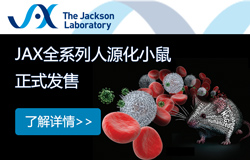PriCells: Questions
Questions 1: Isolation of hepatocytes from other species
The basic two-step perfusion procedure can be used for obtaining hepatocytes from various rodents, including mouse, rabbits, guinea pig, or woodchuck, by adapting the volume and the flow rate of the perfused solutions to the size of the liver.
The technique has been adapted for the human liver by perfusing a portion of the whole liver (usually with 1.5 L HEPES buffer and 1 L collagenase solution at 70 and 30 mL/min, respectively) or by taking biopsies (15-30 mL/min, depending on the size of the tissue sample).
A complete isolation into a single-cell suspension can be obtained by an additional collagenase incubation at 37oC under gentle stirring for 10-20 min (especially human liver).
Fish hepatocytes can be obtained by cannulating the intestinal vein and incising the heart to avoid excess pressure. Perfusion is performed at room temperature at a flow rate of 12 mL/min
Question2: Maintenance and differentiation of liver parenchymal cells
1. Isolation liver parenchymal cells can be maintained in suspension for 4-6 h and used for short-term experiments
2. When seeded in nutrient medium supplemented with 1X106 M dexamethasone on plastic culture dishes (7X105 viable cells/mL), the liver parenchymal cells survive for a few days.
3. Survival for several weeks is obtained by seeding the liver parenchymal cells onto a biomatrix. However, the cells rapidly lose their specific differentiated functions.
4. Higher stability (2 months) can be obtained by co-culturing hepatocytes with liver epithelial cells presumed to derive from primitive biliary cells.
5. Liver parenchymal cells are also more stable when seeded on Matrugel and are capable of undergoing from one to three rounds of cells division when they are cultured I a medium supplemented with EGF and pyruvate or with nicotinamide and EGF.
6. A combination of EGF and DMSO promotes differentiation of liver parenchymal cells.
- 人前列腺癌細胞(Lncap)培養(yǎng)注意要點
- hTERT介導(dǎo)的永生化細胞hTERT ipn02.3 2λ的介紹與應(yīng)用
- 失眠與情緒障礙治療的新靶點之褪黑素受體MT結(jié)構(gòu)功能及相關(guān)實驗介紹
- 3T3 細胞光毒性中性紅攝取試驗原理及步驟介紹
- 穩(wěn)轉(zhuǎn)細胞系(穩(wěn)定表達細胞株)篩選方法及步驟介紹
- 治療心血管等疾病關(guān)鍵藥物靶點APJ受體的介紹及其相關(guān)實驗應(yīng)用
- JHEP Reports文獻解讀:脾臟B細胞在自身免疫性肝炎中發(fā)揮致病作用
- NCI-H358的細胞培養(yǎng)與基因編輯步驟及注意事項






